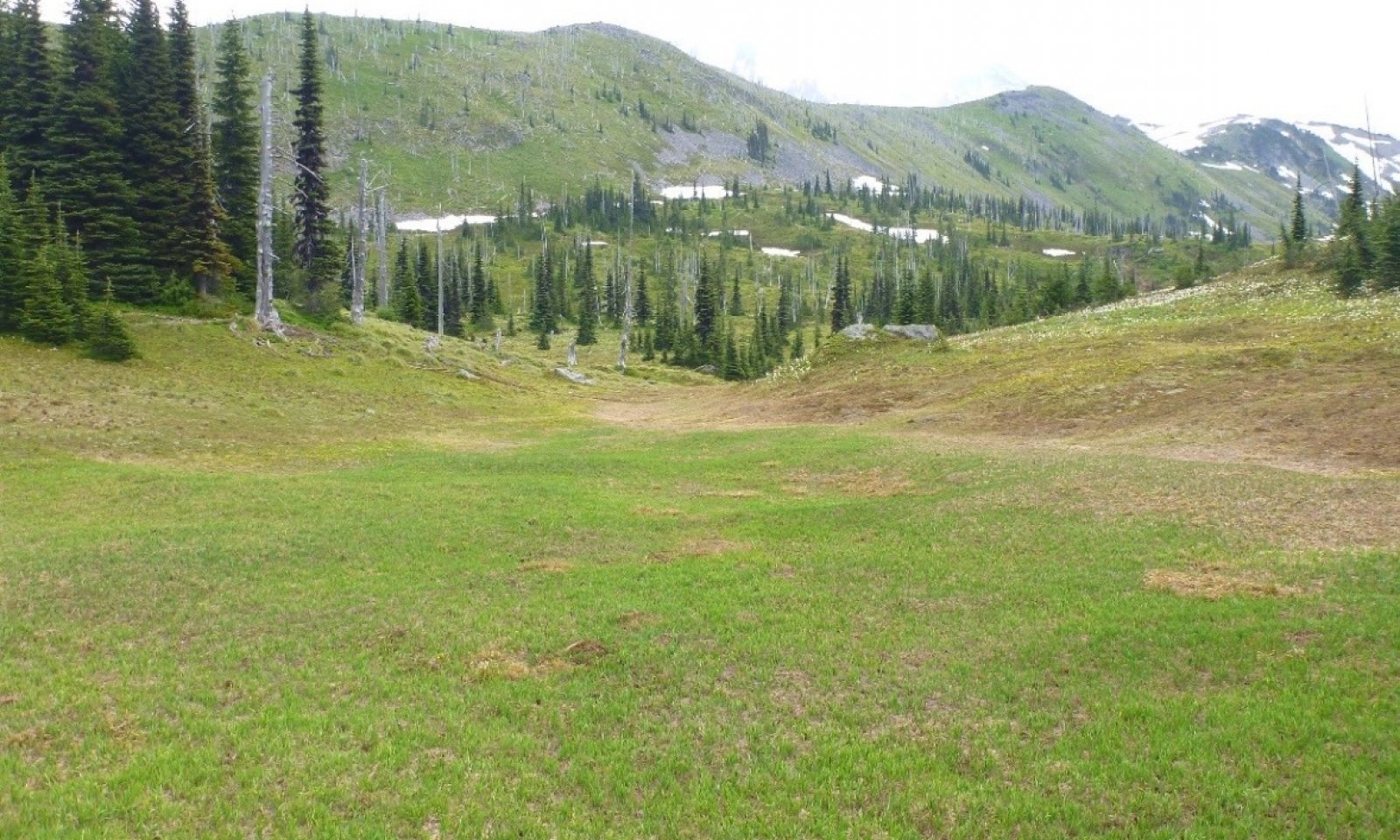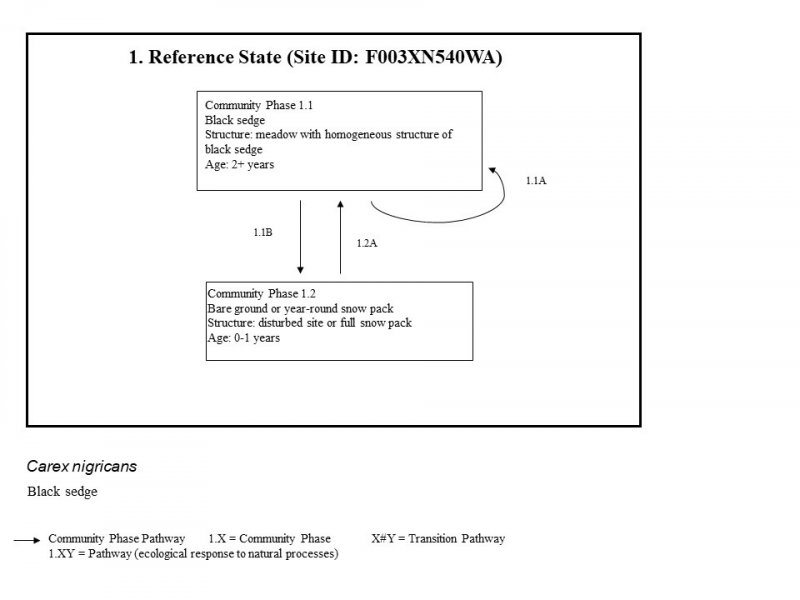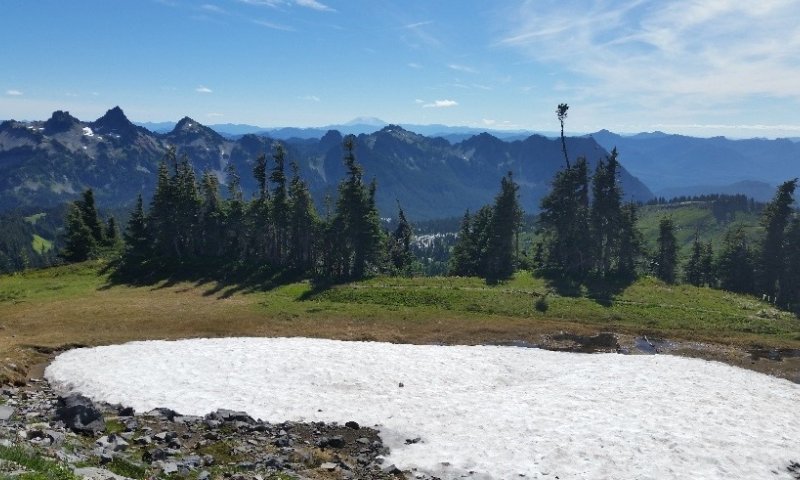

Natural Resources
Conservation Service
Ecological site R003XN540WA
Southern Washington Cascades Wet Subalpine Parkland
Last updated: 1/29/2025
Accessed: 12/21/2025
General information
Provisional. A provisional ecological site description has undergone quality control and quality assurance review. It contains a working state and transition model and enough information to identify the ecological site.
MLRA notes
Major Land Resource Area (MLRA): 003X–Olympic and Cascade Mountains
Steep mountains and narrow to broad, gently sloping valleys characterize this region. A triple junction of two oceanic plates and one continental plate is directly offshore from Puget Sound. Subduction of the oceanic plates under the westerly and northwesterly moving continental plate contributes to volcanic activity in the Cascades. Movement between these plates has resulted in major earthquakes in this area in the past and the formation of large stratovolcanoes. The Cascade Mountains consist primarily of volcanic crystalline rocks with some associated metasedimentary rocks. The average annual precipitation ranges from 60 to 100 inches in much of the region and 30 to 60 inches on the east side of the Cascade Mountains.
The dominant soil orders in this MLRA are Andisols, Spodosols, and Inceptisols, with minor amounts of Entisols, and Histosols. The soils in the area dominantly have a frigid or cryic soil temperature regime and an udic soil moisture regime. They generally are shallow to very deep, well drained, ashy to medial, and loamy or sandy and occur on mountain slopes and ridges.
Ecological site concept
This ecological site occurs in small depressions on cirque floors, debris aprons, swales on glacial valley walls, or cold air drainages in subalpine parkland environments. The most common natural disturbance is heavy snowpack, with the volume and longevity of the snowpack defining the effect on the dynamics of the ecosystem. These sites generally retain snow cover later into the summer than sites on south and west slopes and start growth more slowly due to the cooling effects of the high water table at the beginning of the growing season. Soils that support this ecological site occur in the cryic soil temperature regime and the aquic soil moisture regime. These sites are typically wet with poorly drained soils. They have a very short growing season as a result of cool temperatures and the total heat load during the summer. Ponding on the soil surface is frequent and often persists for long periods of time.
Black sedge (Carex nigricans) is the most common species on this site, and it is often a homogenous ecosystem. In areas with snow recession earlier in the growing season, the site may have greater vegetative diversity including lady fern (Athyrium filix-femina), black sedge (Carex nigricans), bluejoint reedgrass (Calamagrostis canadensis), marsh marigold (Caltha leptosepala), and water parsley (Oenanthe sarmentosa). As a result of the short growing season, flowering will typically occur later in the season and vegetation growth is limited. Alternatively, some growing seasons may be affected by continuous snowpack and vegetation is therefore absent.
Associated sites
| R003XN544WA |
Southern Washington Cascades Wet Alpine Tundra Ecological sites R003XN544WA, Southern Washington Cascades Wet Alpine Tundra, and R003XN540WA, Southern Washington Cascades Wet Subalpine Parkland are both heavily influenced by the amount and duration of annual snowpack. The main abiotic factor affecting plant growth in ecological site R003XN544WA is the proximity to water and melting snow. Common plants include Tiling’s monkeyflower , arctic lupine, partridgefoot, and black alpine sedge. Site R003XN544WA supports a wider variety of vegetation species that have higher production as compared to site R003XN540WA. |
|---|
Similar sites
| R003XN541WA |
Southern Washington Cascades Moist Subalpine Parkland Ecological Site 540, Southern Washington Cascades Wet Subalpine Parkland, has similar features to Ecological Site 541, Southern Washington Cascades Moist Subalpine Parkland. Both ecological sites are found in parklands within the same elevation range, however the position on the landscape affects the persistence of snow cover which create a distinct influence on both sites. Ecological Site 540 is more commonly found in depressions and swales which captures and stores snow for longer periods of the growing season. Wet adapted plants such as black sedge are commonly homogeneous in these growing environments. Ecological Site 541 has a greater level of plant diversity and production as a result of earlier seasonal snow melt which extends the growing season. |
|---|
Table 1. Dominant plant species
| Tree |
Not specified |
|---|---|
| Shrub |
Not specified |
| Herbaceous |
(1) Carex nigricans |
Click on box and path labels to scroll to the respective text.


